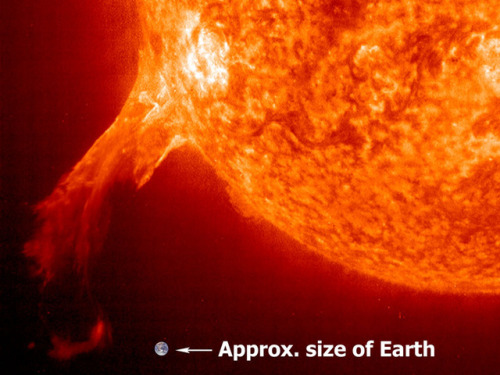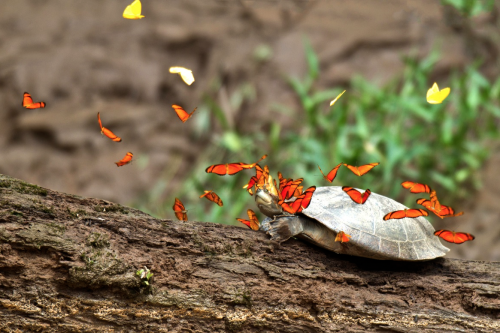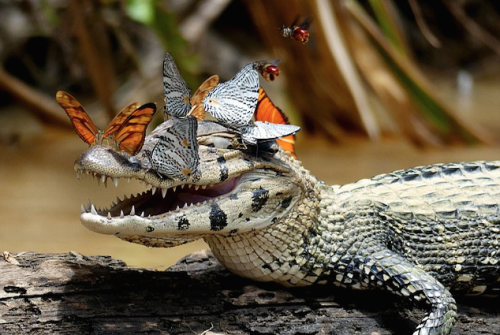Ricardocedillob - Sin Título
More Posts from Ricardocedillob and Others

An Erupting Solar Prominence from SOHO
Credit: SOHO-EIT Consortium, ESA, NASA

Our Weird and Wonderful Galaxy of Black Holes
Black holes are hard to find. Like, really hard to find. They are objects with such strong gravity that light can’t escape them, so we have to rely on clues from their surroundings to find them.
When a star weighing more than 20 times the Sun runs out of fuel, it collapses into a black hole. Scientists estimate that there are tens of millions of these black holes dotted around the Milky Way, but so far we’ve only identified a few dozen. Most of those are found with a star, each circling around the other. Another name for this kind of pair is a binary system.That’s because under the right circumstances material from the star can interact with the black hole, revealing its presence.
The visualization above shows several of these binary systems found in our Milky Way and its neighboring galaxy. with their relative sizes and orbits to scale. The video even shows each system tilted the way we see it here from our vantage point on Earth. Of course, as our scientists gather more data about these black holes, our understanding of them may change.

If the star and black hole orbit close enough, the black hole can pull material off of its stellar companion! As the material swirls toward the black hole, it forms a flat ring called an accretion disk. The disk gets very hot and can flare, causing bright bursts of light.

V404 Cygni, depicted above, is a binary system where a star slightly smaller than the Sun orbits a black hole 10 times its mass in just 6.5 days. The black hole distorts the shape of the star and pulls material from its surface. In 2015, V404 Cygni came out of a 25-year slumber, erupting in X-rays that were initially detected by our Swift satellite. In fact, V404 Cygni erupts every couple of decades, perhaps driven by a build-up of material in the outer parts of the accretion disk that eventually rush in.

In other cases, the black hole’s companion is a giant star with a strong stellar wind. This is like our Sun’s solar wind, but even more powerful. As material rushes out from the companion star, some of it is captured by the black hole’s gravity, forming an accretion disk.

A famous example of a black hole powered by the wind of its companion is Cygnus X-1. In fact, it was the first object to be widely accepted as a black hole! Recent observations estimate that the black hole’s mass could be as much as 20 times that of our Sun. And its stellar companion is no slouch, either. It weighs in at about 40 times the Sun.

We know our galaxy is peppered with black holes of many sizes with an array of stellar partners, but we've only found a small fraction of them so far. Scientists will keep studying the skies to add to our black hole menagerie.
Curious to learn more about black holes? Follow NASA Universe on Twitter and Facebook to keep up with the latest from our scientists and telescopes.
Make sure to follow us on Tumblr for your regular dose of space: http://nasa.tumblr.com

rime_s.tumblr.com

After sunset...
Happy time to all 🍀💚🍀
Image of the Week – June 8, 2020
CIL:12375 - http://cellimagelibrary.org/images/12375
Description: Movie showing the dynamics of kinetchore microtubules during meiosis II in primary spermatocytes of the crane-fly Nephrotoma suturalis that were experimentally flattened. Time-lapse polarization microscopy using a Nikon Microphot SA, equipped for liquid crystal polarized light microscopy (LC-PolScope, CRi, Woburn Massachusetts) 60x/1.4 PlanApo oil immersion objective, 1.4 NA oil imm. condenser, with 2.0x zoom lens. Images captured every 15 sec using a QImaging Retigo EXi CCD camera. Raw images were processed using 5-frame algorithm (Shribak and Oldenbourg, 2003). The time series used for the movie is included in this grouped set.
Authors: James R. LaFountain and Rudolf Oldenbourg
Licensing: Public Domain: This image is in the public domain and thus free of any copyright restrictions. However, as is the norm in scientific publishing and as a matter of courtesy, any user should credit the content provider for any public or private use of this image whenever possible.








lachryphagy is the term used to describe the behaviour of tear drinking in nature, typically in environments - like the purvian amazon shown here - where sodium and other micronutrients are hard to find.
bees and butterflies need sodium for egg production and metabolic purposes, but their diets of nectar are low in salt. so the orange julia and sulfur yellow butterflies you see here turn to the salty tears of often stationary turtles and caiman.
and though the caiman and turtles seem to receive no reciprocal benefit from the interaction, they’re apparently happy enough to just help out. (x, x, x, x, x, x)

Silver Fox, emphasis on silver. This is definitely the night time fox.
Photo by Tracy Munson

-
 elegantmoneyrascalsludge liked this · 6 months ago
elegantmoneyrascalsludge liked this · 6 months ago -
 5peedracer liked this · 1 year ago
5peedracer liked this · 1 year ago -
 kristos69 liked this · 1 year ago
kristos69 liked this · 1 year ago -
 tormenta-de-agosto liked this · 2 years ago
tormenta-de-agosto liked this · 2 years ago -
 jjpp45 reblogged this · 2 years ago
jjpp45 reblogged this · 2 years ago -
 leahy74 liked this · 2 years ago
leahy74 liked this · 2 years ago -
 amantedelacomida-53 reblogged this · 2 years ago
amantedelacomida-53 reblogged this · 2 years ago -
 vernacular79 liked this · 2 years ago
vernacular79 liked this · 2 years ago -
 vaquitacochuda reblogged this · 2 years ago
vaquitacochuda reblogged this · 2 years ago -
 geotormenta liked this · 2 years ago
geotormenta liked this · 2 years ago -
 ulotrixx liked this · 2 years ago
ulotrixx liked this · 2 years ago -
 everydayiseaster reblogged this · 2 years ago
everydayiseaster reblogged this · 2 years ago -
 the-music-makers reblogged this · 2 years ago
the-music-makers reblogged this · 2 years ago -
 tiegom48813 liked this · 2 years ago
tiegom48813 liked this · 2 years ago -
 lucky18x-blog liked this · 3 years ago
lucky18x-blog liked this · 3 years ago -
 basquiat1212 liked this · 3 years ago
basquiat1212 liked this · 3 years ago -
 guapo719 liked this · 3 years ago
guapo719 liked this · 3 years ago -
 elchasca reblogged this · 3 years ago
elchasca reblogged this · 3 years ago -
 sassykoalablaze liked this · 3 years ago
sassykoalablaze liked this · 3 years ago -
 chancletadeoro reblogged this · 3 years ago
chancletadeoro reblogged this · 3 years ago -
 letsnerous liked this · 3 years ago
letsnerous liked this · 3 years ago -
 chiefeezzz reblogged this · 3 years ago
chiefeezzz reblogged this · 3 years ago -
 ricardocedillob reblogged this · 3 years ago
ricardocedillob reblogged this · 3 years ago -
 v69247things liked this · 4 years ago
v69247things liked this · 4 years ago -
 oremor8a liked this · 4 years ago
oremor8a liked this · 4 years ago -
 pr454n7h liked this · 4 years ago
pr454n7h liked this · 4 years ago -
 alskaili23 liked this · 4 years ago
alskaili23 liked this · 4 years ago -
 wuamox liked this · 4 years ago
wuamox liked this · 4 years ago